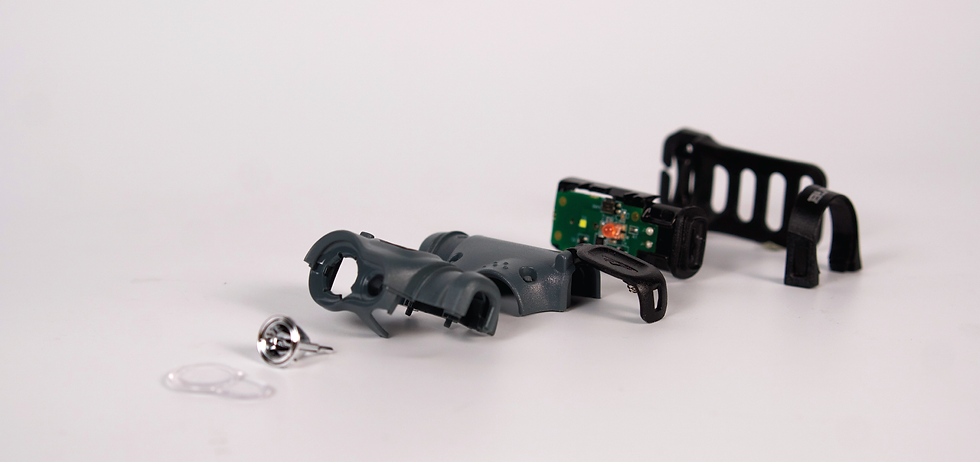Onsight Headlamp
Designed for outdoor sports, onsight is a smart headlamp that reacts to changes in its environment.

Project intent
Designing and code an electronic device that would solve an issue by reacting to various inputs by the user. I solved the issues with current headlamps designing one that incorporates sensors to automatically change its brightness.
Timeline
6 weeks, 08.2024-09.2024
Skills used

Circuit Building

CAD Surfacing

Rapid Prototyping

Concept Ideation

Product rendering

A change of state
Current headlamps require users to stop and repeatedly press a button in order to change lighting settings. This poses a challenge for people engaging in high intensity activities.
Handling tough situations
Current headlamps are especially inconvenient for activities that require both hands. In this scenario, climbers will need to increase the headlamps' brightness as the sun sets, however their hands will be occupied.


Sensors as solutions
1) User turns on device
2) User begins activity
3) As speed increases an accelerometer increases the headlamp's brightness.
4) As the environment gets darker a photoresistor increases the brightness as well.
5) A reactive headlamp that solves the issues that come with lighting high intensity activity.
Architectural Inspiration
I took inspiration from the architecture of this African bank building, particularly its use of three reoccurring aches. When designing my headlamp I took influence from this repetition and rhythm.


Form & Material Goals


I decided that my light needed to be directional and that using a frosted plastic for the light housing would create a unique lighting effect.
By dissecting a current market competitor I was able to gain useful insight on the manufacturing and assembly process of these devices, as well as what components were essential for its functionality.

Band attachment
Lens
Circuit board
Body components
LED & reflector
Examining Current Product

Ideation
I began to develop a basic form based around the reoccurring arch, getting smaller and smaller as it moves forward.
Prototyping
Using fusion 360, I modeled and printed a quick mockup to understand how the form would fit on the band. This also served as a starting point for further iteration.

Triple LED's
Light sensor here
On/OffButton
Sensor Integration

Working towards a final model, I soldered together my components including batteries, sensors and LEDs. When combined with my code and an Arduino Nano which powers this smart lighting effect.


Final Model
The final model is a headlamp that is both light reactive and motion reactive. As speed detected by the accelerometer increases, the middle LED's brightness increases, and as the ambient light decreases in the envirornment the brightness of the outside two LEDs increases.


Illumination in bright lighting

Illumination in dim lighting

Illumination in darkest lighting

On-Head fitment
The onsight headlamp fits easily on the head and includes a curved backplate that rests well on the user's forehead.


_89%20copy.png)

Exploded view
The onsight features three 150 lumen LED's, a simple on/ off button, a glass protective shield and an elastic headband. The device is powered by a rechargeable 3.7v lithium battery.

A look into the future
The Onsight Headlamp creates a hands-free user experience, however there may be certain scenarios where users may prefer to use a button to switch between settings. I feel that this technology would be best suited as a mode that users could switch on and off.